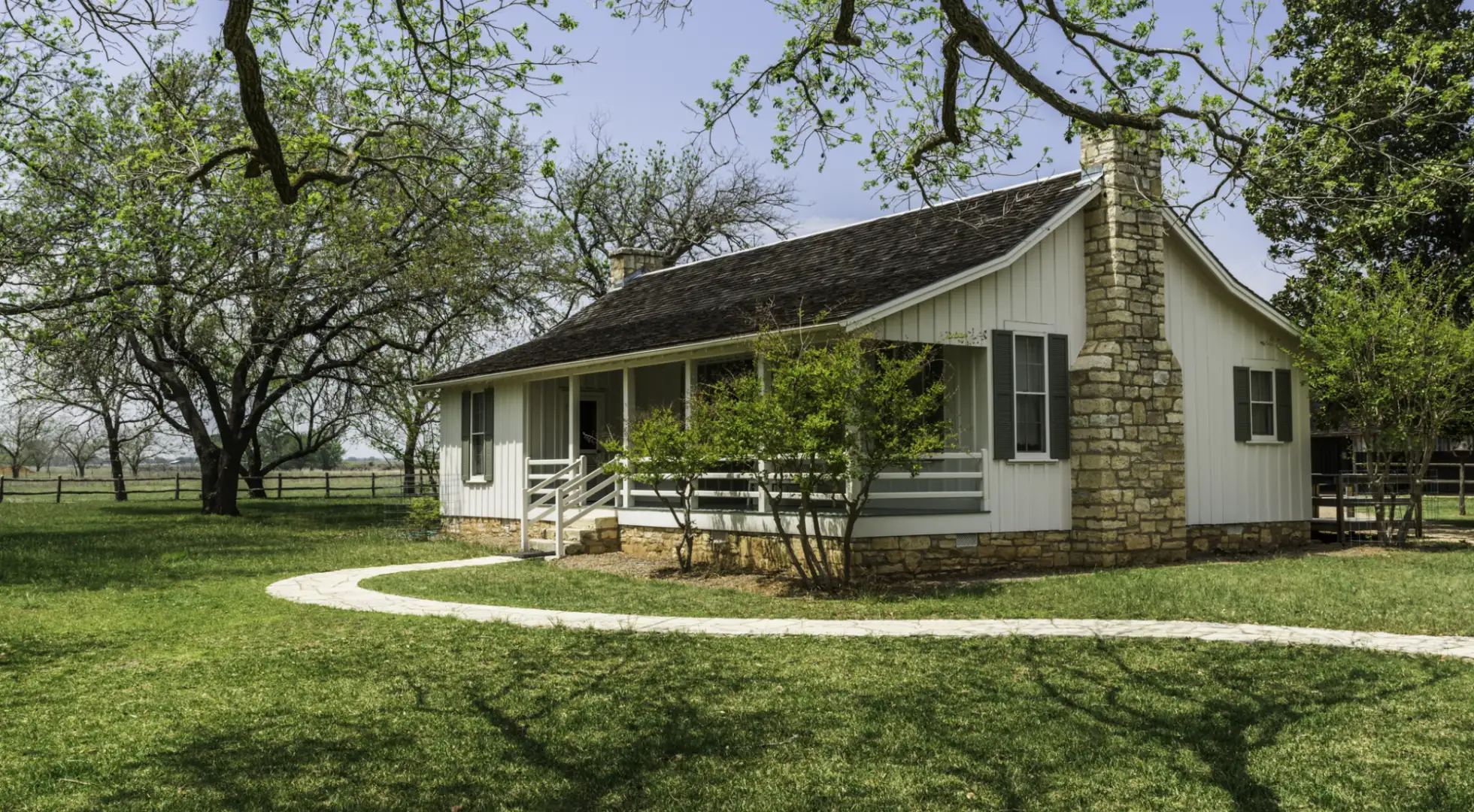Are USDA Loans Assumable? Yes, and Here’s How to Do It

Interest rates have begun to fall from their recent highs but still remain above 6% for most borrowers. So, how are some buyers getting into rural properties with 4% or even lower mortgages? One method is to find homes eligible for USDA loan assumption.
Key Takeaways
Assuming a mortgage lets you take over an existing loan and keep the interest rate and terms intact.
USDA loans are assumable, but not all lenders are willing to offer loan assumptions.
You still need to meet USDA and lender requirements to assume a mortgage.
Assuming a low-rate loan can reduce monthly mortgage costs and slash lifetime interest.
Are USDA Loans Assumable?
First, let's get the most important question out of the way: are USDA loans assumable? The answer is yes, you can assume USDA loans. But what exactly does that mean?
Assuming a mortgage allows you to take over an existing loan with its current interest rate and terms. In most cases, the only thing that changes is the person responsible for making the payments.
Since most homeowners are locked into lower interest rates than those currently available on the market, assuming an existing USDA loan can save borrowers substantially on their monthly payments. Plus, there are fewer closing costs since you aren't taking out an entirely new mortgage.
However, not all USDA lenders allow their mortgages to be assumed. In addition to finding a seller with a USDA loan, you also need to verify that their mortgage holder will even consider the assumption.
Then, you also need to come up with the difference between the seller’s loan balance and the contracted price of the home.
However, buyers who understand and are prepared for the USDA loan assumption process can save big by taking over a seller's current low-rate mortgage.
Do I Qualify for a USDA Loan Assumption?
Assuming a USDA loan requires you to meet all of the standard USDA and lender qualification requirements. The qualification process is no different than applying for a new loan and involves full credit and income underwriting.
Note: There are some rare instances, typically involving inheritance or the court-ordered assignment of property, where you may not be required to qualify to assume a USDA mortgage.
Residency Requirements
For USDA loans, you must plan to occupy the home as your permanent residence within 60 days of closing.
Income Limits
You cannot earn more than 115% of the median household income in your purchasing area.
Credit Score
The USDA does not set a required score for its loan program, but each lender will have their own minimum credit standards. Mortgage companies often look for a score of 640 or higher for USDA loans. Still, some lenders will approve buyers with worse credit through manual underwriting.
Debt-to-Income Ratio
Your debt-to-income (DTI) ratio is the percentage of your monthly earnings that go toward paying your debt obligations, including the mortgage you’re assuming. Most USDA lenders have a maximum DTI limit between 41% and 44%.
Employment History
Lenders typically want two full years of employment history with steady and consistent earnings. However, applicants with an employment gap may still get approved in some scenarios.
How to Assume a USDA Loan
1. Find a property with an assumable USDA loan
Not all homes listed for sale will have an assumable loan, much less one insured through the USDA. Even then, not all USDA lenders allow loan assumptions. Luckily, more listing platforms have begun allowing users to filter properties by those with assumable loans.
2. Negotiate a sales price and determine how to cover the gap between it and the loan balance
When you buy a home and assume an existing mortgage, the loan balance will likely be lower than the property's current value. For example, a $300,000 home with a $250,000 assumable mortgage would require the buyer to come up with $50,000 in cash or through a second loan.
3. Submit your application for assumption to the lender
Once you have a home under contract, you can submit your application to the lender to begin the loan assumption process.
4. Provide the necessary documents typically required from all borrowers
Like most other mortgages (except some streamline refinances), assuming an existing loan requires submitting documents like W-2s, filed tax returns, and bank and asset statements. Some lenders are simplifying this process through the use of direct verification.
5. Wait for the lender to complete the underwriting process
The lender then combs through all your documents and ensures you're fully qualified to assume the USDA mortgage. Expect underwriting to take a little longer than with a standard purchase loan.
6. Sign the USDA loan assumption documents, pay closing costs, and finalize the purchase of your home
Once the lender has approved your assumption of the existing USDA mortgage, the final step is to close on the property. You'll sign the USDA loan assumption documents, pay your closing costs and any balance to the seller, and walk away with the keys to your new home.
Pros of USDA Loan Assumption
An assumable USDA loan can benefit both buyers and sellers, offering a win-win situation in today’s tough housing market.
Benefits for Buyers
Lower Interest Rates – Rates are much higher than they were just a few years ago, which has a direct impact on housing affordability. USDA loan assumption lets you take over an existing mortgage with a below-market interest rate and lower payments compared to a brand new loan.
Less Lifetime Interest – Reduced interest rates don't just lower your monthly payments; they also slash your lifetime interest cost. For example, a $200,000 home loan at 6.5% would come with $255,000 in interest over a 30-year repayment term. With an assumed 3.5% mortgage, that lifetime interest cost would total just over $123,000.
Cheaper Closing Costs – You still need to pay some closing costs to assume a USDA loan, but the total is likely much less than if you were originating a new mortgage. Avoiding the USDA upfront guarantee saves you 1% right from the start. Plus, you won't need to obtain a new appraisal, possibly shaving costs by $500 or even more in most locales.
Benefits for Sellers
More Marketable Property – Offering an assumable loan at a lower interest rate than buyers could currently obtain is a major selling point, especially in the present housing market. This increased affordability allows you to reach a broader range of qualified buyers.
Potential for a Higher Selling Price – An assumable USDA mortgage often lets you command a higher selling price than comparable homes with non-assumable loans due to buyers' willingness to pay a premium for the lower monthly costs.
Saving on Selling Fees – Homeowners with an assumable loan often consider offering their property to friends or family members to help reduce their housing costs. Doing so can also benefit the seller by eliminating the 5% to 6% commission customarily paid when listing with a real estate brokerage.
Cons of USDA Loan Assumption
Although USDA loan assumption can offer a variety of benefits, there are some downsides to consider before limiting your home search solely to assumable mortgages.
Fewer Homes to Choose From
While more prevalent in some areas than others, most homes listed for sale do not have USDA mortgages. Data from the Mortgage Bankers Association shows USDA loans represent less than 0.5% of all new mortgage applications.
It May Require a Cash Down Payment
If the seller has any built-up equity in the home, you likely need to make up the difference between the assumed USDA loan balance and the sales price with a cash down payment. It may be possible to apply for a second loan, although those closing costs and higher interest rates may detract from the benefits of mortgage assumption.
Not All Lenders Approve Assumptions
While USDA guidelines allow agency-guaranteed mortgages to be assumed, individual lenders have the right to deny assumption requests. In some cases, lenders may not permit assumptions at all, while others may only allow them under certain circumstances.
It Can Take Longer to Assume a Mortgage
Assuming a mortgage often takes longer than obtaining a new loan. While reasons vary, lenders frequently give less priority to completing loan assumptions than originating new mortgages, which generate more income for the company.
Alternatives to USDA Loan Assumption
USDA loans aren't the only types of assumable mortgages out there. While conventional loans are not assumable, all government-backed loans are. In addition to the USDA, you may also be able to assume a mortgage issued by the FHA or VA.
FHA Loan Assumption
FHA loans are far more common than those backed by the USDA, making up around 15% of all applications. FHA-backed mortgages do not have income and geographical restrictions like USDA-backed mortgages and can generally be assumed by borrowers with a credit score of 580 or higher.
VA Loan Assumption
VA-backed loans are assumable, but many sellers are only willing to transfer mortgages to other VA-eligible borrowers. Non-eligible buyers (who still meet other VA and lender guidelines) can assume a VA loan, but the seller's "loan entitlement" would remain tied up in the home, which prevents them from using their full benefits again in the future.
The Bottom Line
USDA loan assumption can allow buyers to stretch their purchasing budgets further by taking over low-interest rate mortgages from sellers, who benefit from the competitive advantage of having an assumable home loan.
However, assuming a USDA loan can take longer than obtaining a regular mortgage, and some lenders may not even allow assumptions at all.
If you're having trouble finding an assumable mortgage or qualifying for loan assumption, consider applying with a conventional or FHA lender. Both options have guidelines that differ from the USDA's, and mortgage providers may be able to approve you to shop for a wider range of homes.






